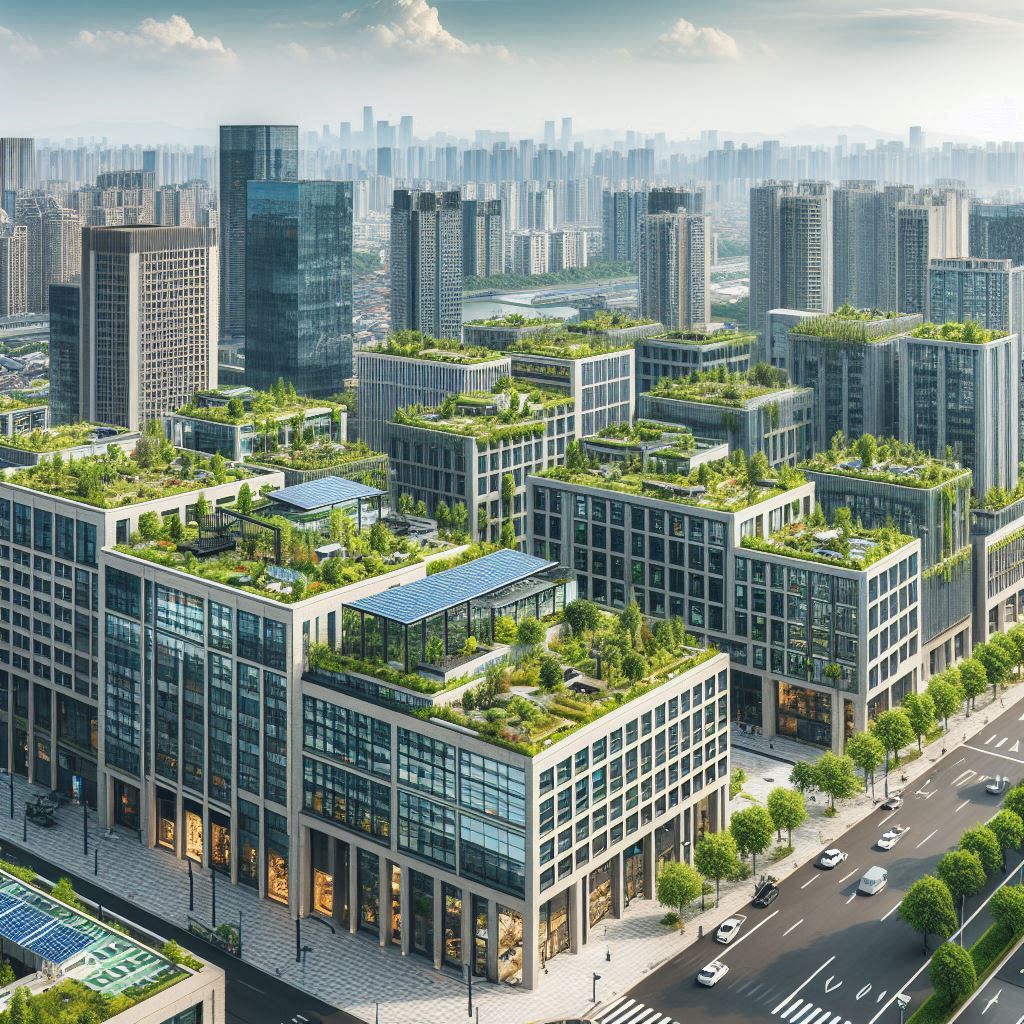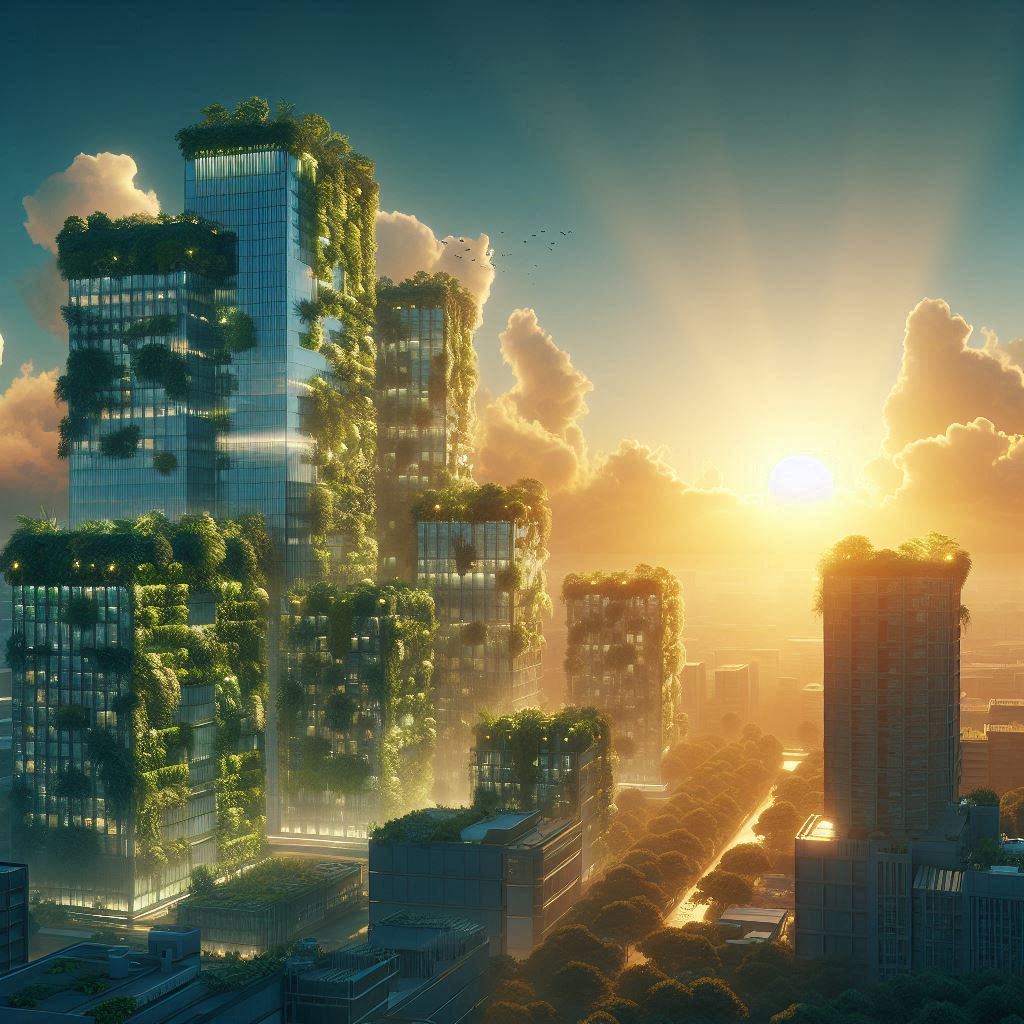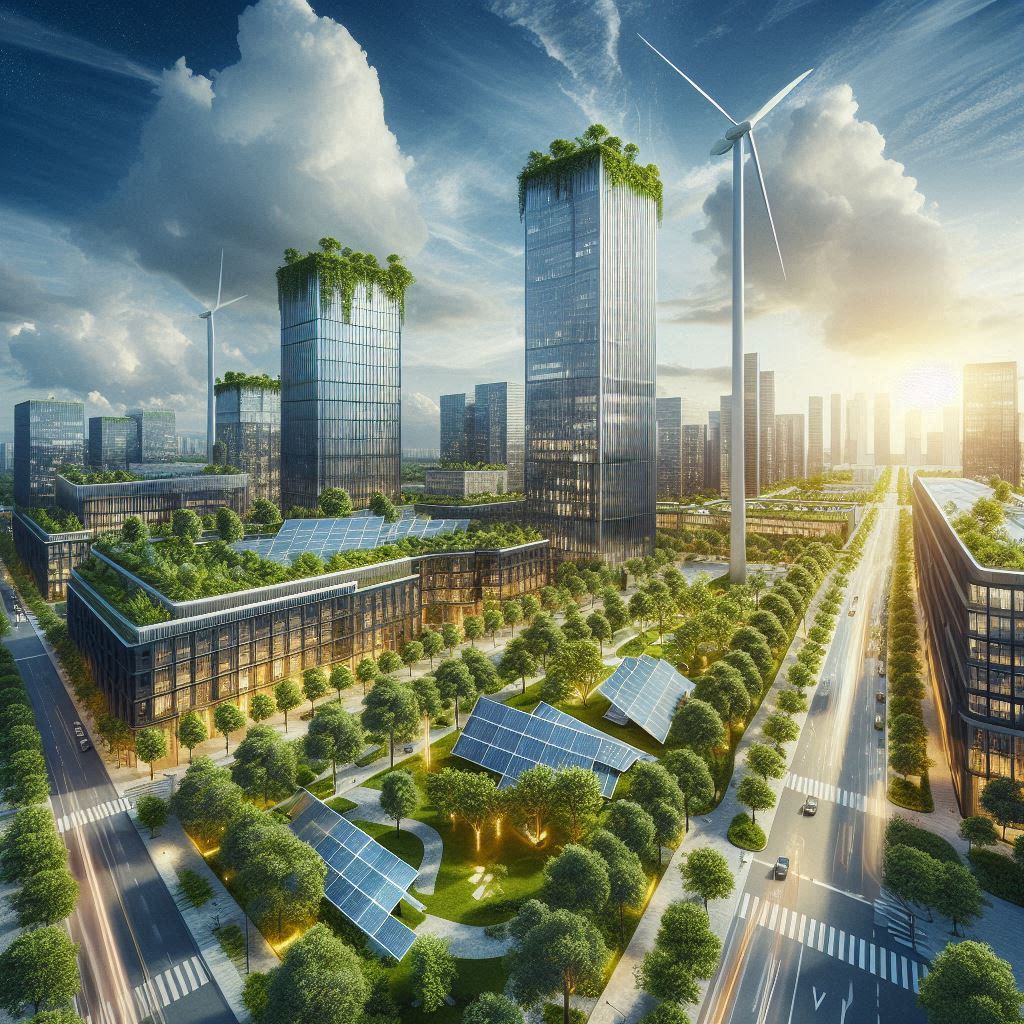As we embrace a new era of environmental accountability, the call for sustainable living echoes louder than ever before. Central to this paradigm shift is the concept of Green Building Design—an approach that integrates the principles of sustainability into the core of the architectural blueprint. Energizing this evolution is Energy Modeling, a predictive force that is reshaping the landscape of eco-friendly construction.
I. Introduction
The Growing Awareness and Importance of Green Building Designs
The construction sector stands at a crossroads where tradition meets innovation, birthing a new era of buildings that not only coexist with nature but also nurture it. Green building design embodies an ethos that emphasizes the conservation of resources, energy efficiency, and a harmonious relationship with the environment. Amid rising global temperatures and shrinking natural resources, adopting green buildings is not just a trend, but an imperative shift required for a sustainable future. To understand the global movement towards green buildings, resources such as the World Green Building Trends provide extensive insights.
Introduction to Energy Modeling and Its Relevance to Green Designs
In the realm of sustainable architecture, energy modeling serves as a cornerstone, offering a glimpse into the future energy performance of buildings. It’s a technique that marries the precision of mathematics with the vision of design, enabling architects and engineers to craft buildings that align with the highest standards of energy efficiency. Energy modeling’s relevance extends beyond compliance; it embodies the forward-thinking innovation required for a sustainable architectural legacy. For a primer on energy modeling, the U.S. Department of Energy’s Building Energy Modeling is a valuable resource.
II. Understanding Energy Modeling
Definition of Energy Modeling
Energy modeling is a simulation process that utilizes advanced software to predict the energy usage and efficiency of a building design. It takes into account parameters such as geographic location, climate, building materials, orientation, insulation, HVAC systems, and lighting. This process helps identify the most energy-intensive aspects of a building and proposes modifications to enhance its overall energy profile. For an in-depth exploration of energy modeling, ASHRAE offers a variety of resources.
Importance and Benefits of Energy Modeling
The strategic value of energy modeling is unparalleled in the design process. It not only informs design decisions that can lead to significant energy savings but also assists in obtaining LEED Certification and fulfilling the criteria for a net zero energy building. Moreover, it underpins the development of efficient Building Energy Management Systems, ensuring that the buildings of today evolve in lockstep with the technologies of tomorrow. The [International Building Performance Simulation Association](https://www.ibpsa.org/) provides further reading on the importance of building simulation.
III. Green Building Design: An Overview
What is Green Building Design?
Green Building Design is an architecture and construction philosophy that prioritizes sustainability in the built environment. It seeks to minimize the negative environmental impacts through resource-efficient and energy-saving design, forging a path towards a more sustainable and eco-friendly future. Guidelines and principles can be explored through the U.S. Green Building Council’s LEED standards.
Key Principles of Green Building Design
The bedrock of Green Building Design lies in several key principles that focus on resource efficiency—such as utilizing renewable energy, minimizing waste, optimizing building performance, and enhancing occupant health and safety. These guiding principles ensure that sustainability is not an afterthought, but a fundamental aspect of the design process. For a detailed explanation of these principles, the Green Building Initiative offers a comprehensive breakdown.
The Synergy of Energy Modeling and Green Building Design
Energy modeling is not merely a facet of green building design but a catalyst for it. This powerful synergy allows for the creation of buildings that are fine-tuned to their environment, responsive to the needs of their occupants, and representative of the highest ideals in sustainable development.
IV. Impact of Energy Modeling on Green Building Design: Deep Dive
Energy Efficiency
a. How Energy Modeling Enhances Building Efficiency
Crafting an energy-efficient building is akin to solving a complex puzzle. Energy modeling acts as the blueprint, guiding architects through the maze of possibilities to arrive at solutions that yield the greatest energy savings without compromising on design integrity.
b. Case Examples
Pioneering projects such as the Bullitt Center in Seattle showcase how energy modeling can be leveraged to create one of the most energy-efficient buildings in the world, demonstrating the feasibility and benefits of such an approach.
Sustainability
a. Energy Modeling’s Role in Promoting Sustainability
Sustainable architecture is not just about energy but also about longevity and adaptability. Energy modeling aids in creating buildings that can stand the test of time and adapt to changing environmental conditions while minimizing their carbon footprint.
b. Real-World Instances of Sustainability Achieved Through Modeling
Leaders in sustainable design, like the Edge, implement energy modeling to achieve outstanding sustainability credentials, setting a benchmark for future developments.
Cost-effectiveness
a. Energy Savings Translating to Financial Savings
The economic rationale for energy modeling is compelling. By laying the groundwork for lower energy consumption, it results in substantial cost savings across the lifespan of a building, from construction to operation.
b. Verification via Studies and Reports
Research such as the Cost of LEED report by the U.S. Green Building Council demonstrates how energy modeling can be a cost-effective strategy that supports the financial objectives of sustainability.
The Future of Green Building Design with Energy Modeling
a. Advancements in Energy Modeling Technology
Continuous advancements in the field of energy modeling promise a future where green building design is more precise, more efficient, and more attuned to the needs of the planet. Technological innovations are setting the stage for the next generation of energy models that will revolutionize the design and construction industry. Stay informed about the latest advancements with resources such as the Energy Modeling Platform for Advanced Innovation.
b. Predicted Trends and Impacts on Green Building Design
Emerging trends suggest a future where buildings are not just passive structures but active participants in energy management, with the ability to respond dynamically to their environment. Energy modeling will be at the forefront of this transformation, informing the design of buildings that are more resilient, adaptive, and intelligent. For a glimpse into these emerging trends, the Sustainable Buildings and Construction Programme of the One Planet Network offers valuable insights.
VII. Conclusion
The pivotal role of energy modeling in propelling green building design forward cannot be overstated. As we forge ahead in the quest for sustainability, energy modeling emerges as an indispensable tool, ensuring our buildings are efficient, cost-effective, and, above all, harmoniously integrated with the environment.
VertPro.com serves as a resourceful platform for property owners and managers seeking to enhance their buildings’ energy efficiency. The site offers a range of services, including Commercial Energy Audits, Benchmark Compliance consultancy, and a Construction Marketplace. At the heart of VertPro® is a suite of SaaS technology-based solutions designed to assist in navigating the complexities of Energy Benchmarking and Energy Audits/RCx Plus, while ensuring adherence to over 60 Energy Benchmarking and Energy Efficiency Laws across the country.
For those looking to improve their property’s energy usage and operational value, VertPro.com provides a diverse array of tools and information. The site aims to facilitate a better understanding of energy efficiency practices and legislation, helping building owners and property managers make informed decisions about their energy strategies while complying with all energy ordinances and laws.



